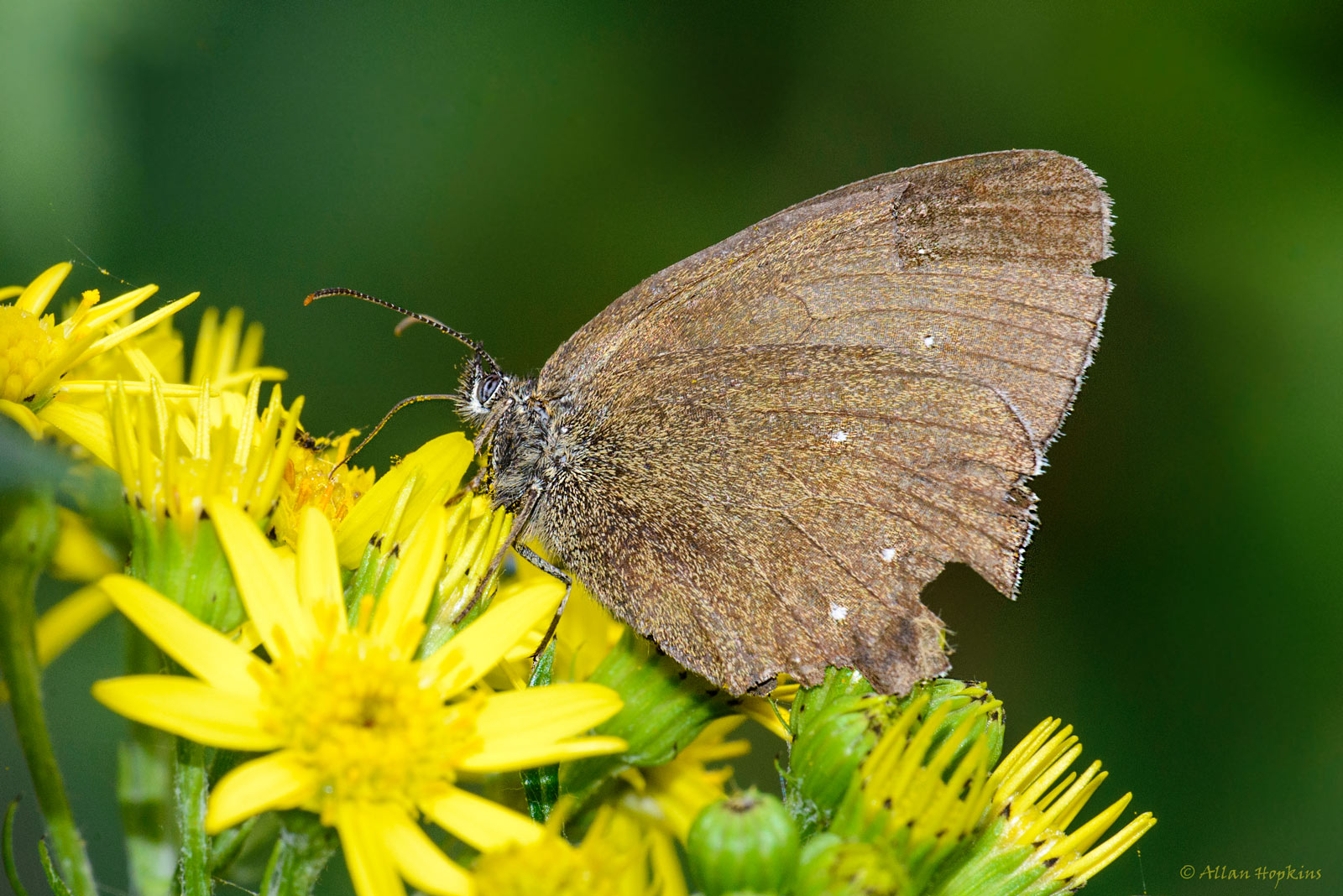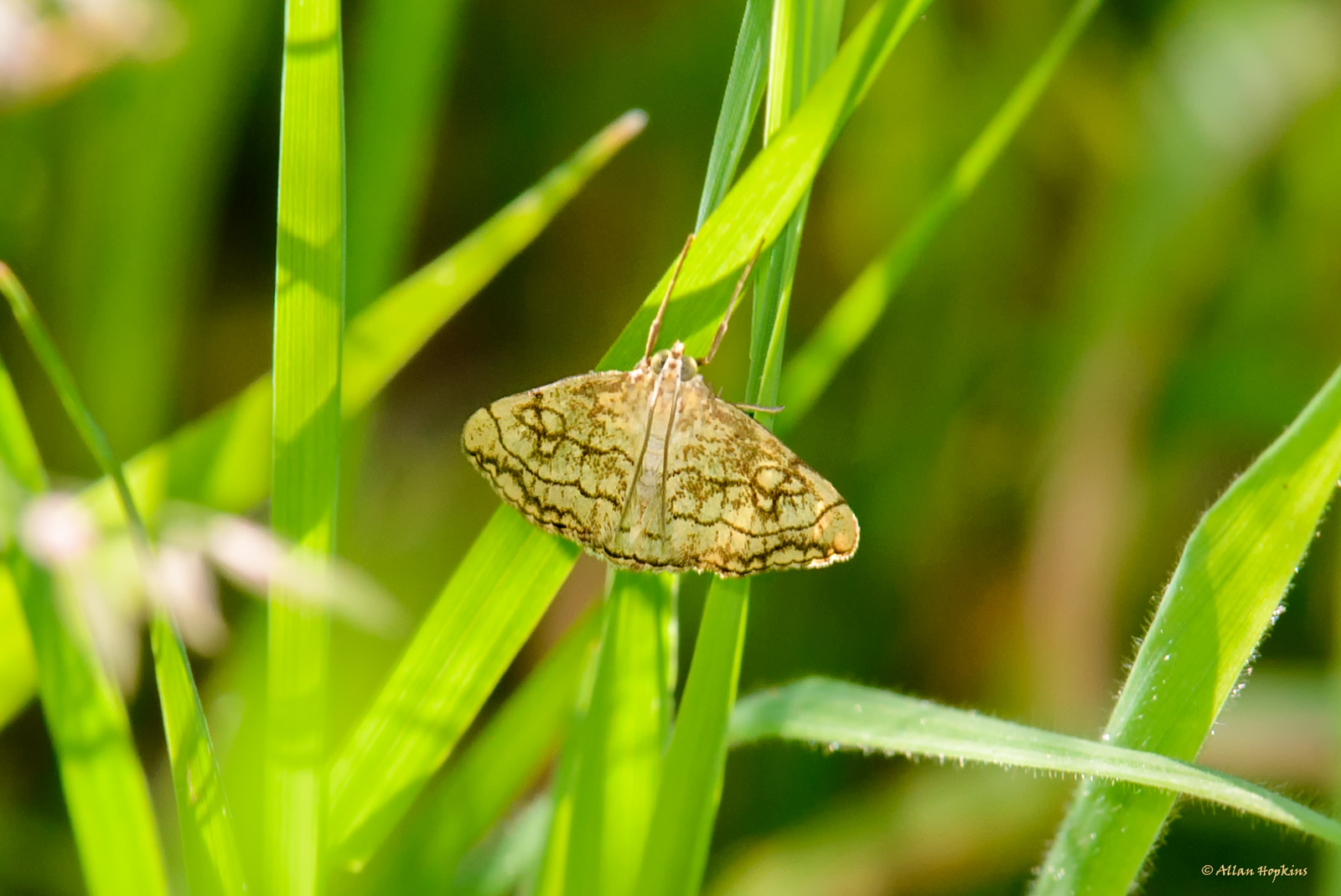Warm overnight conditions on 4th July encouraged me to trap mid-week, and yielded over 70 moth species. There didn't seem to be anything particularly special, but plenty of nice colourful species to show two visitors to the Old Lands holiday cottages: lots of Buff-tip, some Elephants, a Scarce Silver-lines etc. My first
Udea ferrugalis Rusty-dot Pearl of the year indicated there was a little bit of migration going on, but when I potted up a white-streaked Crambid from among the 80+
Chrysoteuchia culmella in the trap I assumed it would be a Dingestow resident needing just a quick check.
It wasn't - the white-edged costa indicated either
C. lathoniellus or
C. pratella, and the relatively broad central white stripe suggested the latter. The key character lies in this central white stripe, which has an angle on its costal edge and is straight-edged in
C. lathoniellus. I have arrowed this feature on one of my photos, because it's not immediately understandable when read about in the books, and have included a similarly arrowed photo of
C. lathoniellus for comparison (thanks to Ian Morgan for his image, as I didn't have one of my own.
Crambus pratella from Dingestow and Crambus lathoniellus from Llanelli
arrows show angle on costal edge of the white streak on the C. pratella
and the straight equivalent in C. lathoniellus
There are two confirmed VC35 records of Crambus pratella: both made by Richard Clarke at Ochrwyth in summer 2013. There isn't really any suitable habitat - unimproved, short dry grassland - at Dingestow and I'm sure this individual has wandered from further afield. The Micros book suggests that some/most southern British records are migrants from Europe, and my Udea ferrugalis indicates there was migration going on last night, but I wouldn't be surprised if its origin was somewhere in SE or SW Gwent.















































